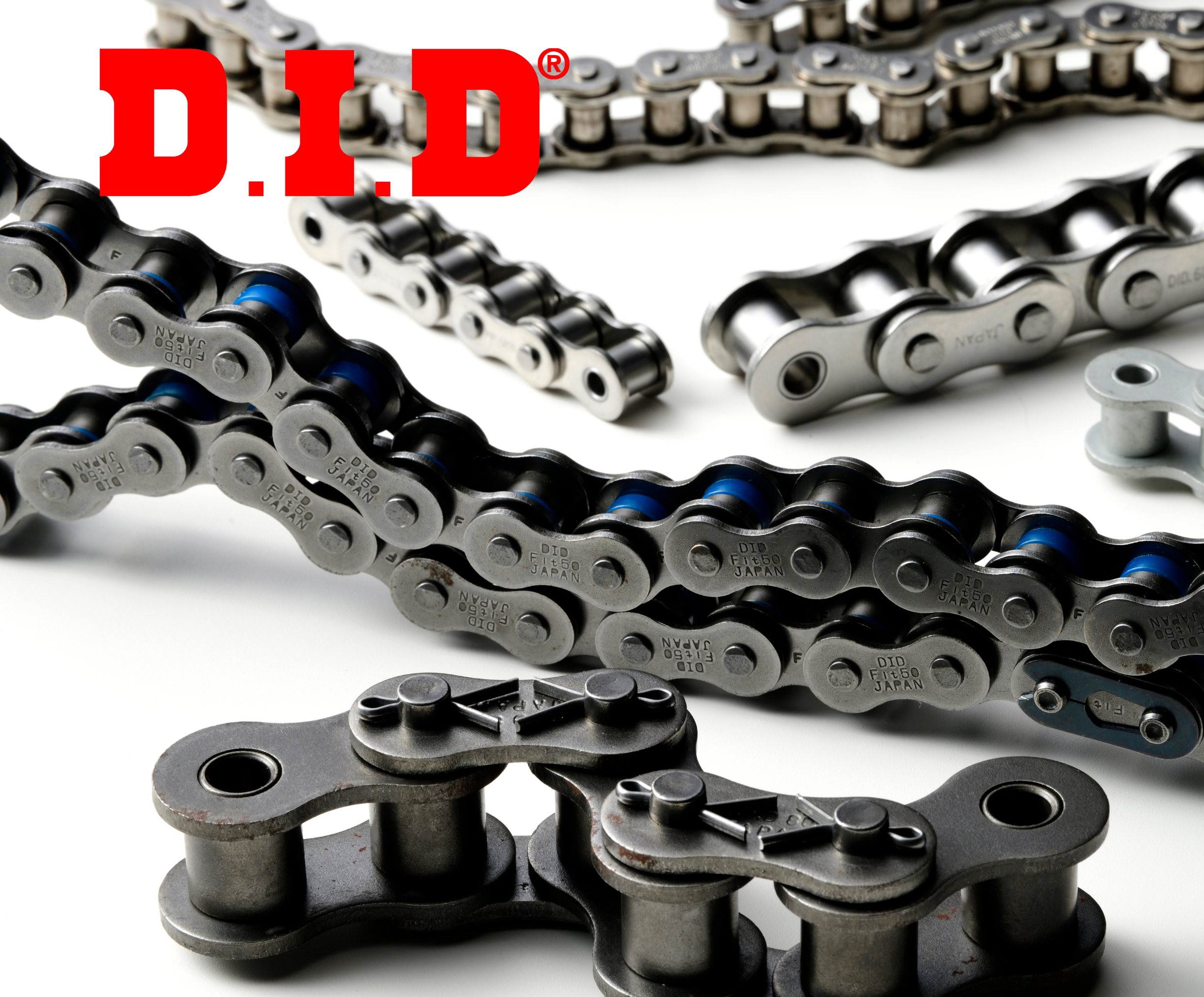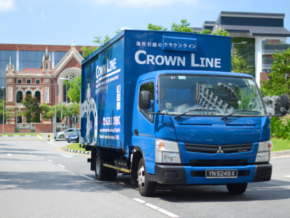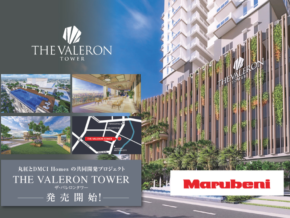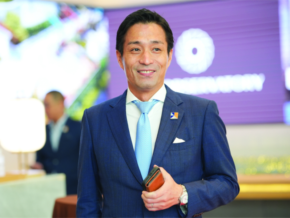Business Talk with Ryosuke Gokyu: President of Sojitz Philippines
Sojitz Philippines has been actively conducting trading company operations in the Philippine market since the early 20th century, starting from its predecessor companies, Nichimen and Nissho Iwai. The current Sojitz, formed through a merger, has inherited the history and networks of both companies, and in recent years has been expanding into new fields such as office development, attracting attention. This time, we interviewed Mr. Gokyu, who assumed the presidency of the company in October 2024, about local business strategies, their journey so far, and future prospects.
From Abaca to Urban Infrastructure
Sojitz’s Vision for the Development of the Philippines

Sojitz Philippines Corporation President Mr. Ryosuke Gokyu
Philippine Primer:
How has Sojitz developed in the Philippines?
Mr. Gokyu:
Sojitz’s business development in the Philippines dates back to 1908. Although no clear documents remain, the first transaction is believed to have involved the export of “abaca,” a type of hemp cultivated in Mindanao Island that is widely used for ropes, paper, clothing, and more. This export of abaca is considered the starting point of Sojitz’s business in the Philippines.
Later, in 1936, one of Sojitz’s predecessor companies, Iwai Sangyo, opened a branch office in Manila. It was a relatively early advance among Japanese trading companies. After World War II, Nichimen and Nissho Iwai, also predecessor companies, opened Manila branches, subsequently expanding into a wide range of fields such as lumber, fertilizer, steel, textiles, machinery, and industrial park development, contributing to postwar economic reconstruction.
A representative development was in 1969 when the former Nissho Iwai established a vehicle sales company for the FUSO brand, and in 1972, jointly participated with Mitsubishi Motors in a vehicle assembly company, which later developed into “Mitsubishi Motors Philippines Corporation (MMPC).” This move became a pioneering step for the full-scale entry of the Japanese automobile industry into the Philippine market. In 1995, we invested in Atlas Fertilizer Corporation (AFC), which engaged in chemical fertilizer operations, and made it a wholly owned subsidiary in 2001.
In 2004, Nichimen and Nissho Iwai merged to form “Sojitz Corporation.” Under this new structure, developments in the Philippines continued. In 2017, we established “Nippon Premium Bakery (NPB)” and began a confectionery bread and loaf bread business under the FUWAFUWA brand. In 2021, we entered the telecommunications infrastructure business, promoting the development of telecommunications towers through LBS Digital Infrastructure Corporation (LDIC). In 2022, we also participated in the office building redevelopment project “The Yuchengco Centre Project” in Makati City in cooperation with the Yuchengco Group.
Philippine Primer:
What are the characteristics of the office building under development?
Mr. Gokyu:
The relationship between Sojitz and the Yuchengco Group spans over 50 years, built through transactions such as those with RCBC Bank, connecting Japanese and Philippine businesses. This project also started following an invitation from the Yuchengco Group.
Currently aiming for completion by the end of 2025, we held the topping-out ceremony in February 2025 and have intensified tenant attraction efforts in collaboration with the local agency Leechiu.
This project aims to create a space that reflects Japanese values of “safety, security, comfort, and convenience.” The design is by Nikken Sekkei. Unlike the many super high-rise buildings often seen in the Philippines, it adopts a policy of “large and comfortable single floors,” maximizing the site size. With a standard floor rentable area of approximately 4,000 m², it boasts one of the largest floor areas in the Makati area.
In the past, Manila’s office buildings often couldn’t secure enough space, forcing companies to be spread across multiple floors and offices. This building aims to solve that issue. It is also possible to customize floors, providing flexibility to meet the diverse needs of tenant companies.
Furthermore, the lower floors will feature restaurants and activity spaces open to the public, while the upper floors will have tenant lounges and shared meeting rooms. This will allow for refreshment within the building and the hosting of large-scale meetings, realizing an “urban workplace” that combines convenience and comfort.
This project is not just a real estate development but is envisioned to serve as a “platform within the city.” It aims to be a place where people and businesses intersect and new value is created, not just confined to office space. We hope many Japanese companies will utilize this optimally designed, high-quality, well-managed space in the highly convenient Makati area to promote their businesses in the Philippines.
Philippine Primer:
Please tell us about your future business development plans.
Mr. Gokyu:
The Philippines is increasingly gaining presence year by year and is a market with great potential. Many companies likely feel that economic fundamentals, geopolitical positioning, and demographics all indicate future growth. Within this context, we at Sojitz Group intend to focus on three areas based on the business foundations we have built up in the Philippines.
The first is agriculture-related business. We already have a wholly owned subsidiary, Atlas Fertilizer, which manufactures and sells chemical fertilizers. But moving forward, we want to expand into agriculture and livestock in a broader sense. In the Philippines, population growth and a low food self-sufficiency rate are challenges. I believe our role is to create mechanisms to deliver better products at more affordable prices and stably.
The second area is energy. Like Japan, the Philippines is an island nation with chronic challenges in energy supply systems, and electricity demand is rapidly increasing alongside economic growth. We want to actively engage in the provision of new energy supplies and infrastructure development, considering trends like renewable energy and decarbonization.
The third area is urban and regional infrastructure development. The “The Yuchengco Centre Project” currently underway is one such effort, but we also have a history of developing industrial parks. There are still many areas in the Philippines where “there is land but no value attached to it.” It is crucial not to just develop but to think about how to add value—to attract people, create employment, and vitalize regions.
Going forward, focusing on agriculture, energy, and urban infrastructure as our three pillars, we aim to firmly contribute to the sustainable growth of the Philippines and the resolution of social issues.
Profile:
Born in Tokyo in 1975. After graduating from Keio University, he joined Nichimen (now Sojitz) in 1998. After working in the Synthetic Resin Department and being assigned to London for training, he handled joint ventures within the UK. Following business reorganization during the merger with Nissho Iwai, he engaged in new hospital business development in Southeast Asia. From 2018, he managed Asia-Oceania regional operations from Singapore and assumed his current position in October 2024.
Motto:
Although I don’t have a specific motto, I always try to be “fair and square” and “lead by example.” I value a sense of balance, accepting both good and bad times as part of the flow without being swayed emotionally.
Hobbies:
Basically an indoor type, with golf being my biggest struggle (laughs). I love horses—not just horse racing but also became a partial horse owner due to my love of horses (laughs).













